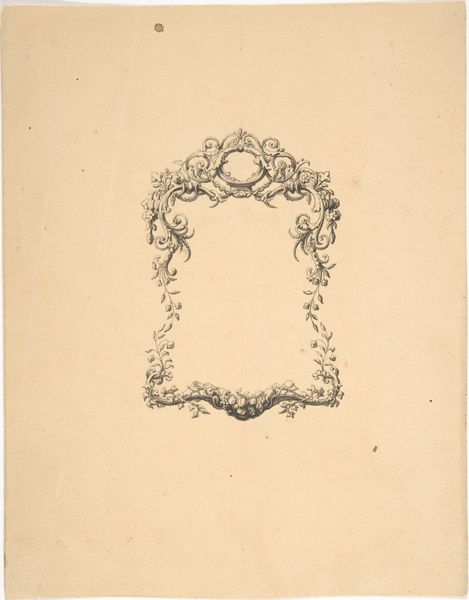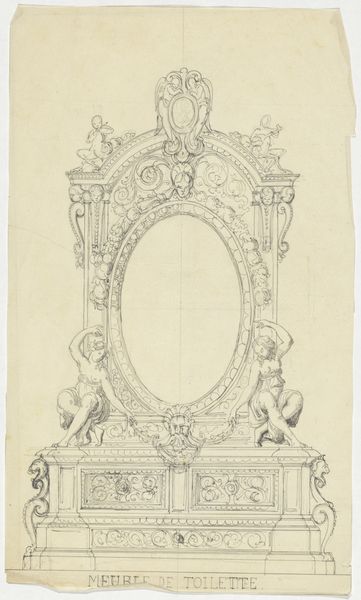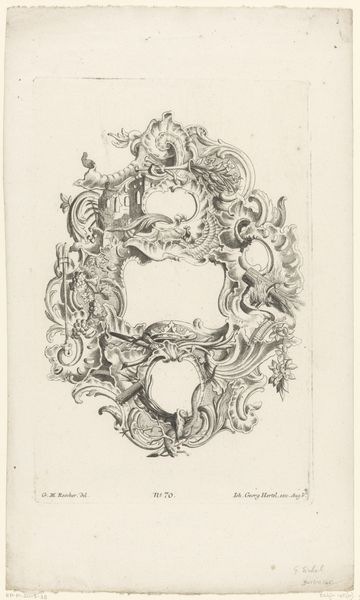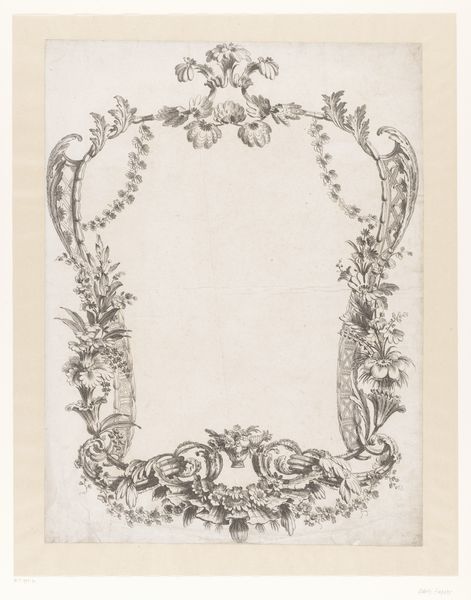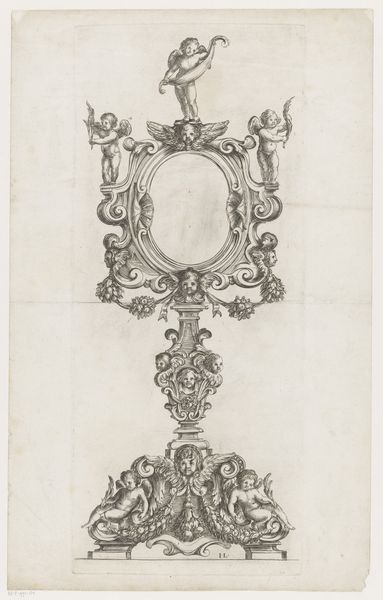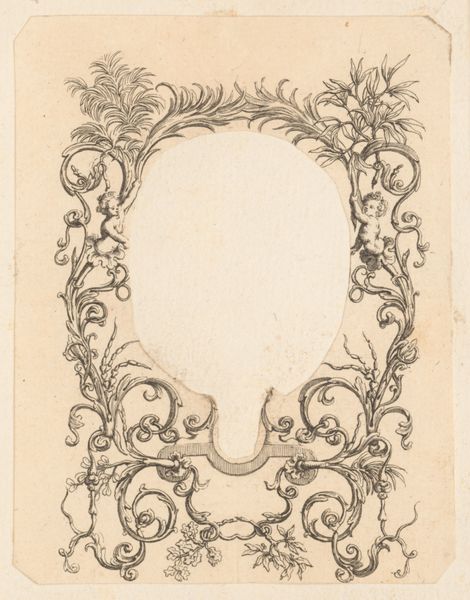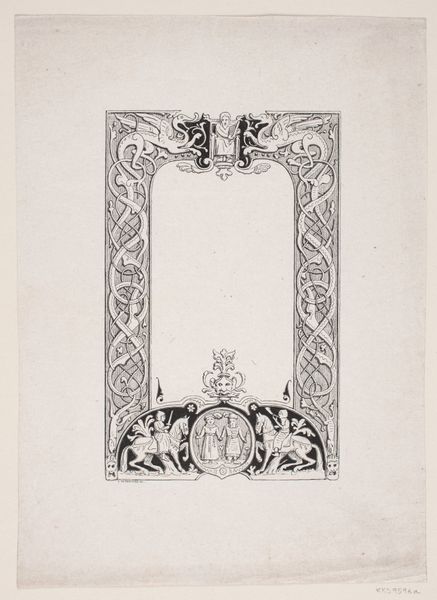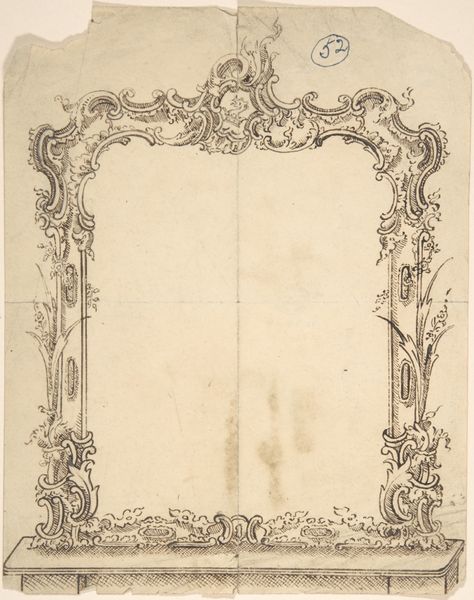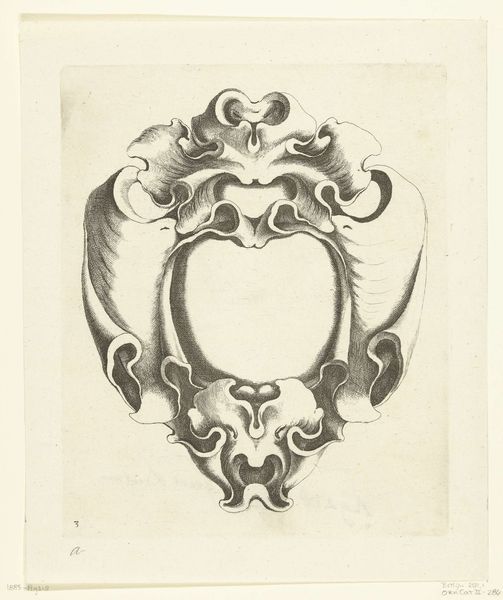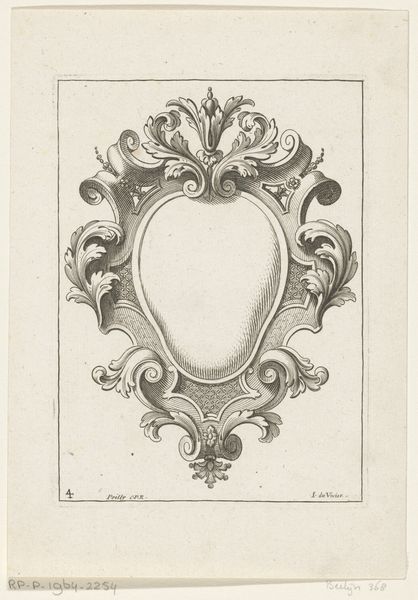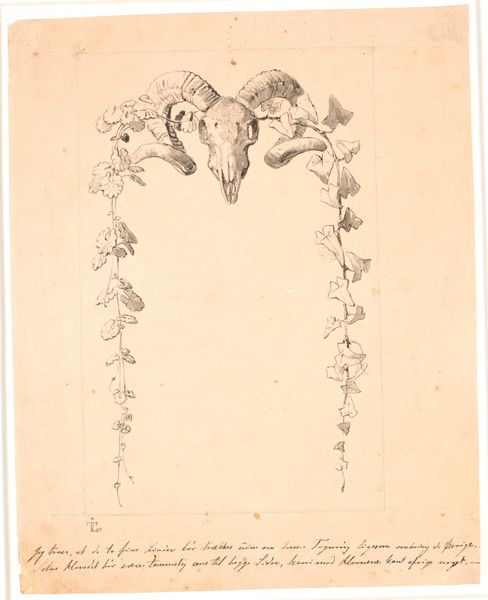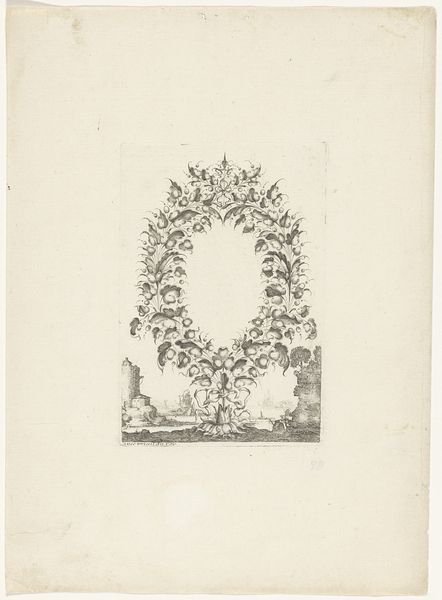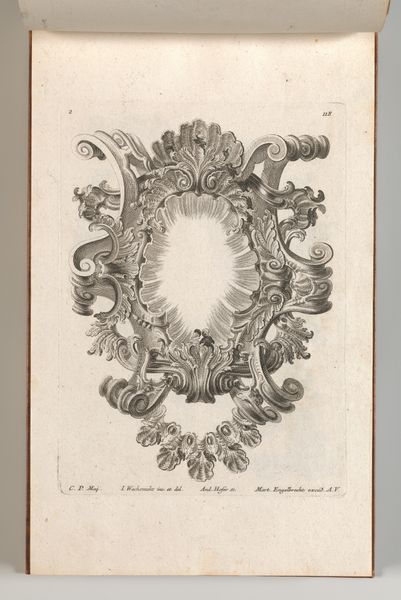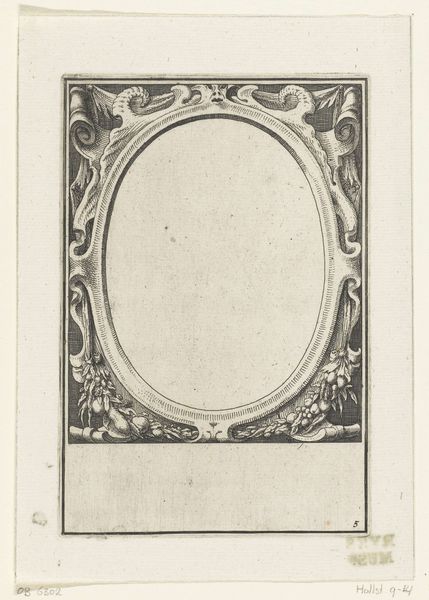
drawing, graphic-art, print, etching, engraving
#
drawing
#
graphic-art
#
baroque
#
pen drawing
# print
#
etching
#
engraving
Dimensions: height 468 mm, width 336 mm
Copyright: Rijks Museum: Open Domain
Curator: Standing before us is a striking example of Baroque printmaking: "Cartouche met bustes en harnas," dating back to 1731, conceived by Jean Moyreau. It combines etching, engraving, and pen drawing techniques. Editor: It’s quite ornate, isn't it? The fine lines give it a delicate feel, almost like lace, belying the stern subject matter of the military busts. There’s something about its rigidity that contrasts heavily against what is perceived today as contemporary war theory. Curator: Precisely. We must situate this work within the context of 18th-century militarism and the visual culture that supported it. Cartouches like these were not simply decorative; they functioned as symbols of power, framing and legitimizing the authority figures they represented. They reinforced prevailing notions of power structures. Editor: Yes, I understand. And who held this power during this particular time in history. Whose narratives were centered during that time? Where did this narrative leave others. And does our viewing this work today somehow impact this prevailing message. I want to push it a little more. Are there underlying feminist notions woven into the patterns or is it simply an exaltation of the masculine figure? Curator: An intriguing question. Certainly, Moyreau’s composition employs traditionally masculine iconography of war and strength through depictions of armory and military leaders. We must remember these images largely operated within male-dominated networks of power and patronage, largely suppressing marginalized identities and narratives of anyone other than upper class, typically straight men. Editor: Absolutely. This artwork is such an excellent conversation starter because the stark military frame contrasted with the fine detail and flourishes really illuminates gender and political constructs. Even from 300 years in the future, we can see them at play. Curator: Indeed. Examining the historical context of art empowers us to critically examine our present. Editor: And the dialogue between history and art becomes a tool to challenge contemporary norms. It offers such important awareness that leads to inclusivity.
Comments
No comments
Be the first to comment and join the conversation on the ultimate creative platform.
